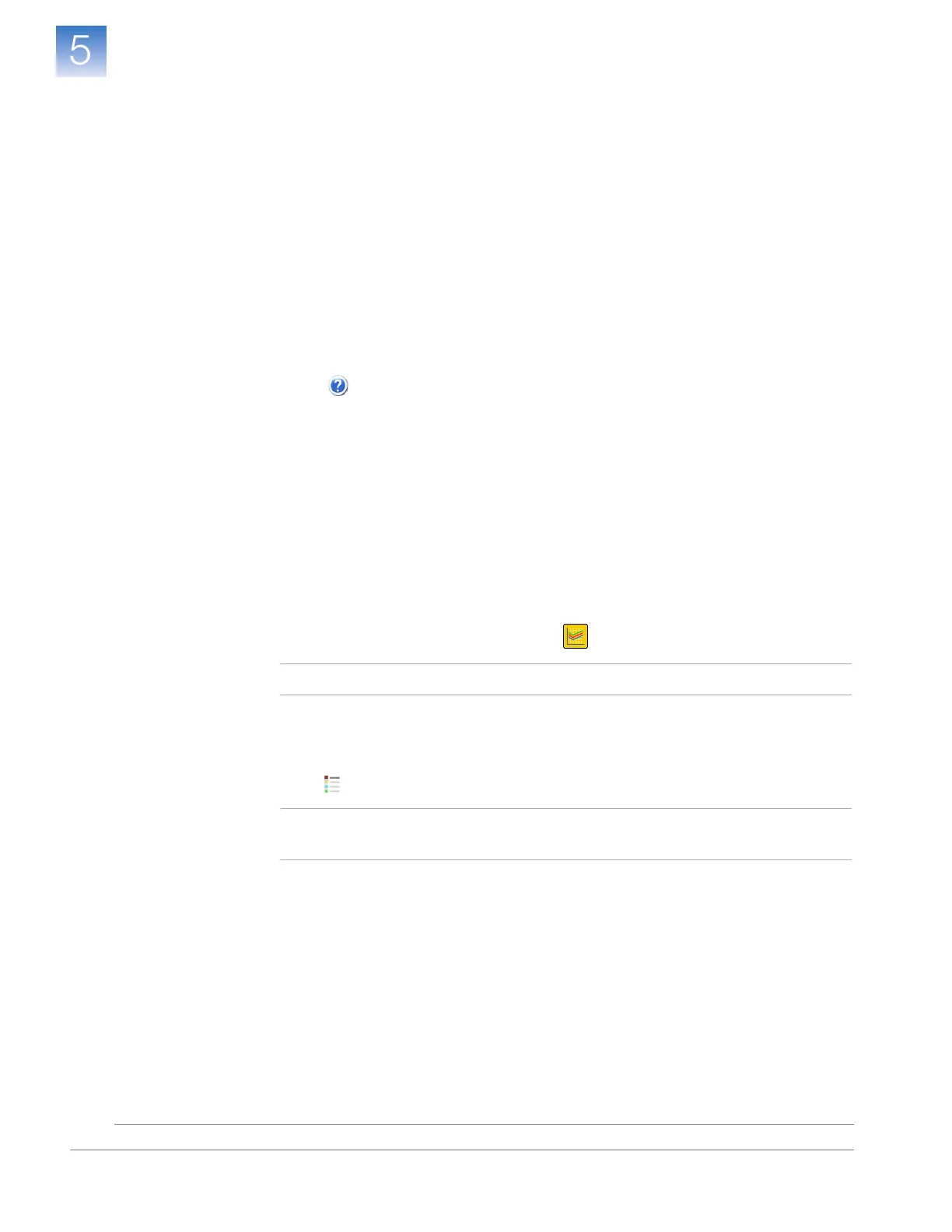Chapter 5 Analyze the Experiment
View the Raw Data Plot
Applied Biosystems 7500/7500 Fast Real-Time PCR System Getting Started Guide for Standard Curve
Experiments
94
Notes
Analysis
Guidelines
When you analyze your own standard curve experiment, look for:
• Passive reference – The passive reference dye fluorescence level should remain
relatively constant throughout the PCR process.
• Reporter dye – The reporter dye fluorescence level should display a flat region
corresponding to the baseline, followed by a rapid rise in fluorescence as the
amplification proceeds.
• Any irregularities in the signal – There should be no spikes, dips, and/or sudden
changes in fluorescence.
• Negative control wells – There should be no amplification in the negative control
wells.
For More
Information
For more information on the Multicomponent Plot screen, open the 7500 Software Help
by clicking or pressing F1.
View the Raw Data Plot
The Raw Data Plot screen displays the raw fluorescence (not normalized) for each optical
filter for the selected wells during each cycle of the real-time PCR.
About the
Example
Experiment
In the standard curve example experiment, you review the Raw Data Plot screen for a
stable increase in signal (no abrupt changes or dips) from the appropriate filter.
View the Raw
Data Plot
1. In the navigation pane, select Analysis Raw Data Plot.
Note: If no data are displayed, click Analyze.
2. Display all 96 wells in the Raw Data Plot screen by clicking the upper left corner of
the plate layout in the View Plate Layout tab.
3. Click (Show a legend for the plot).
Note: This is a toggle button. When the legend is displayed, the button changes to
Hide the plot legend.
The legend displays the color code for each row of the reaction plate. In the example
shown below, Row A is red, Row B is yellow/green, Row C is green, and so on.
4. Click-drag the Show Cycle pointer from cycle 1 to cycle 40. In the example
experiment, there is a stable increase in signal from filter 1, which corresponds to
the FAM
™
dye filter.

